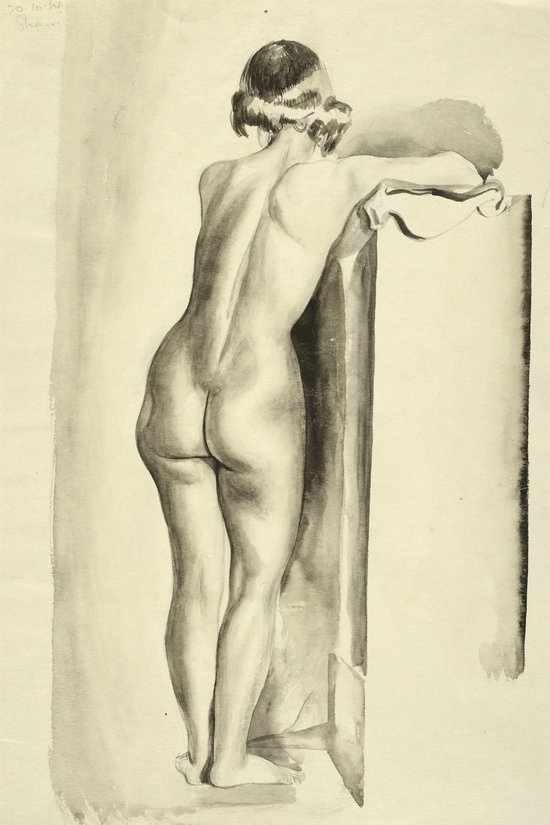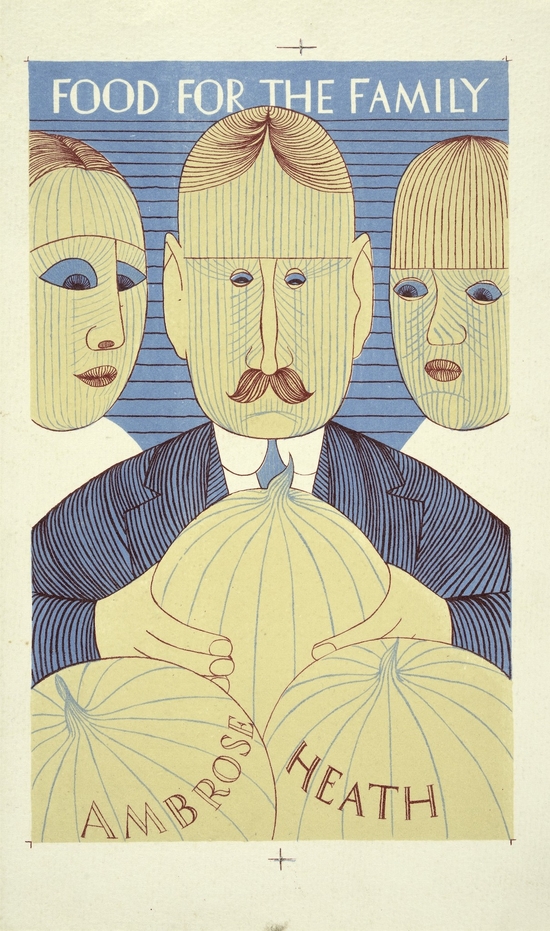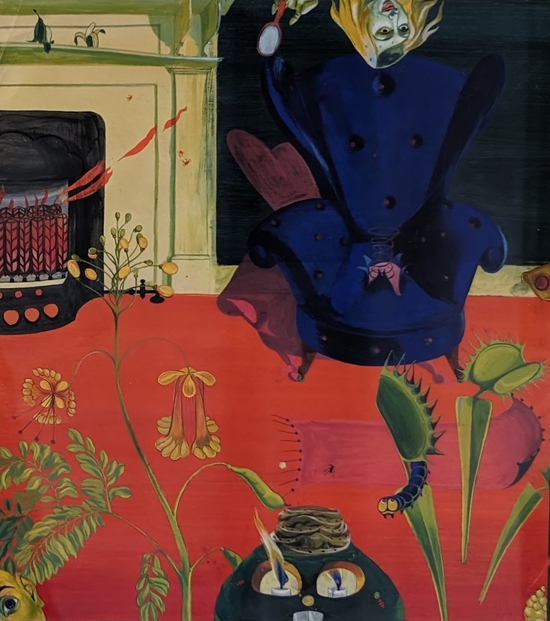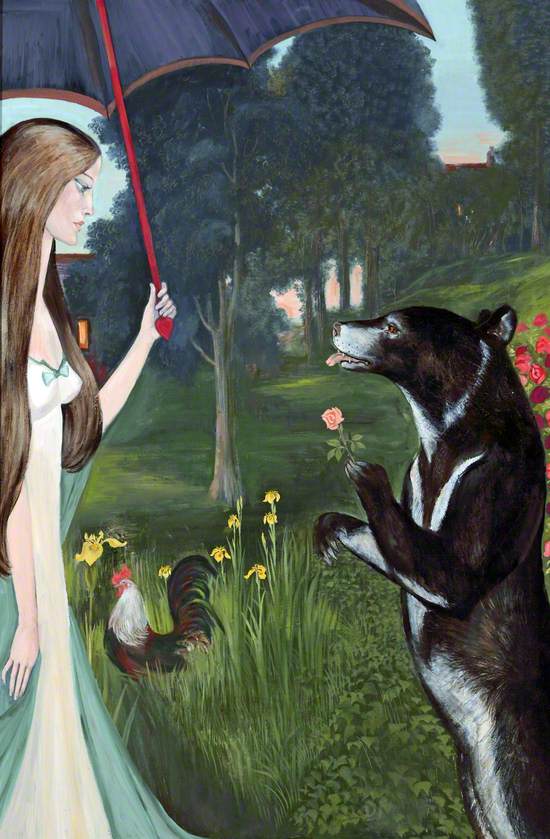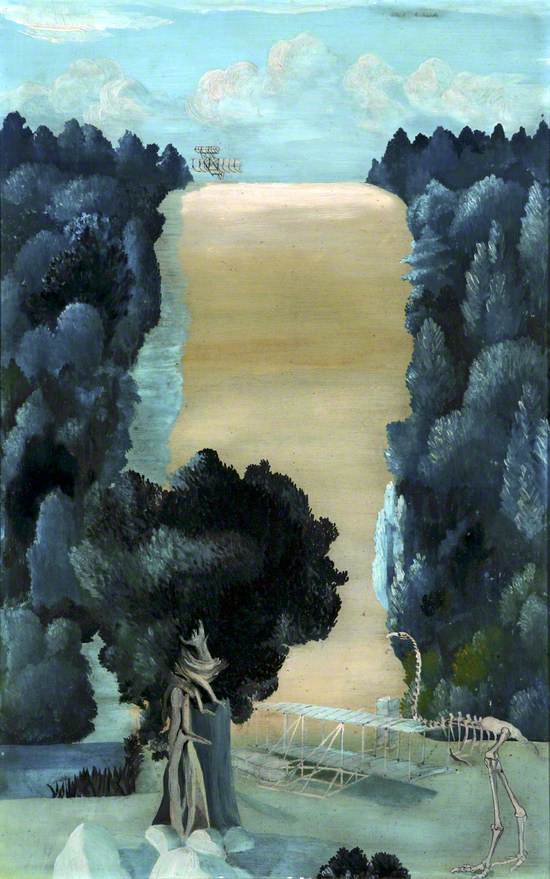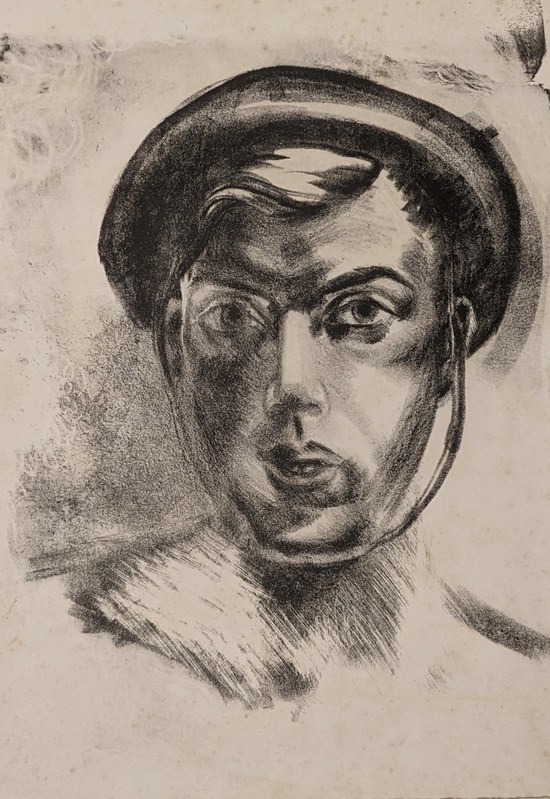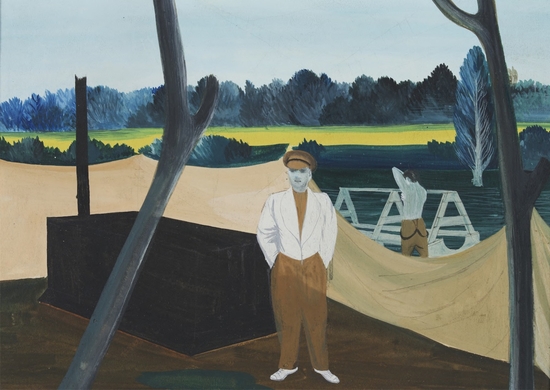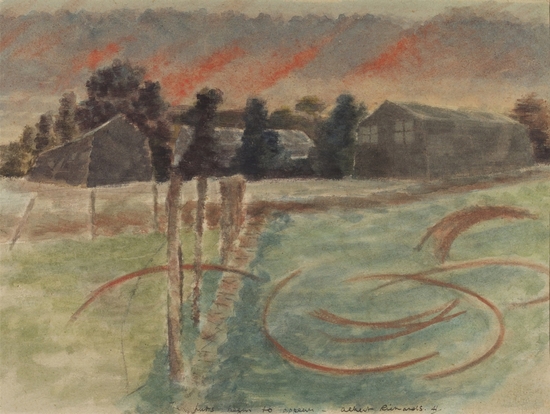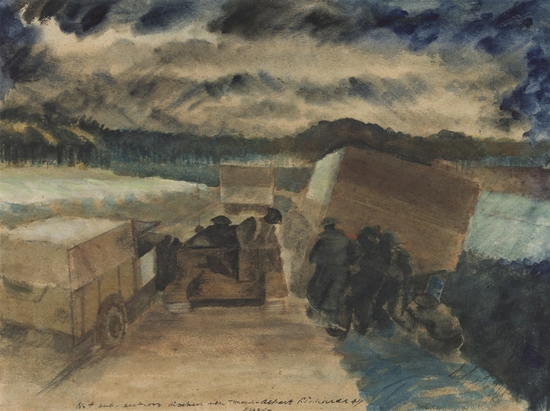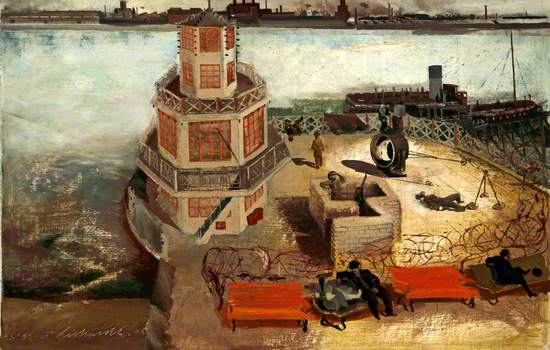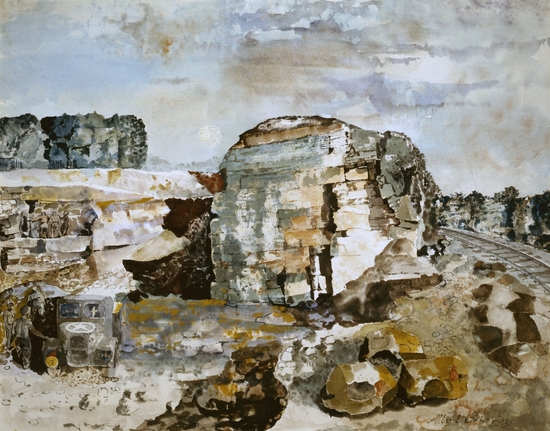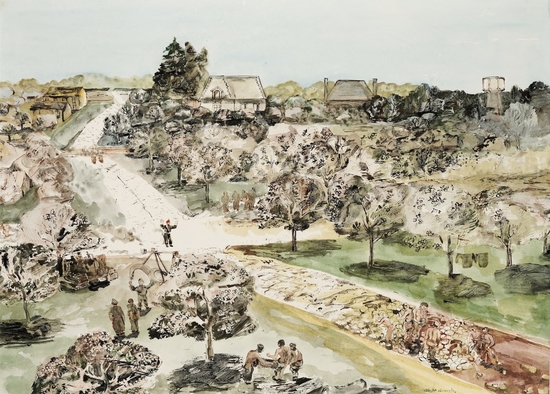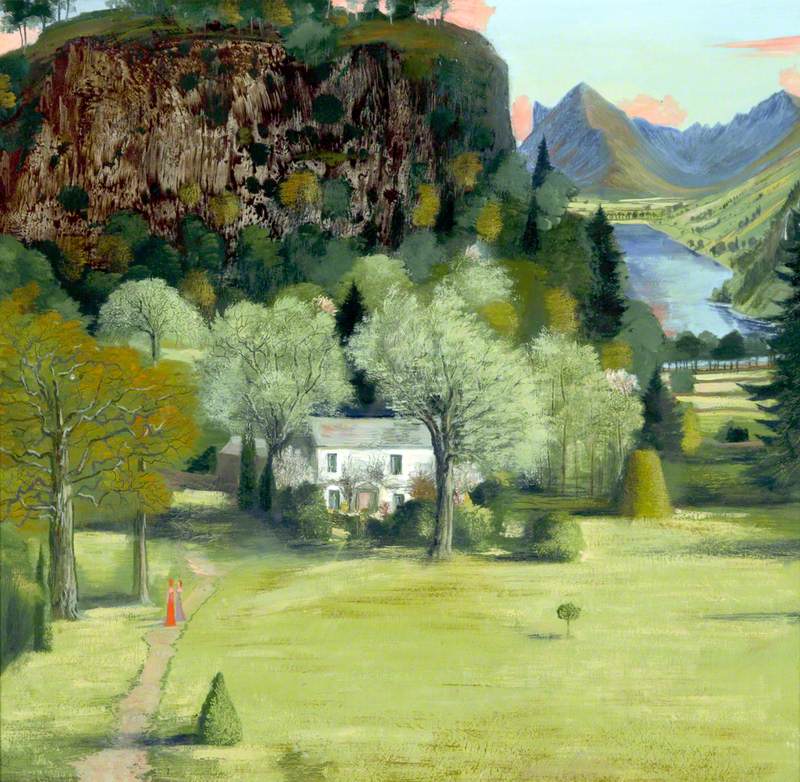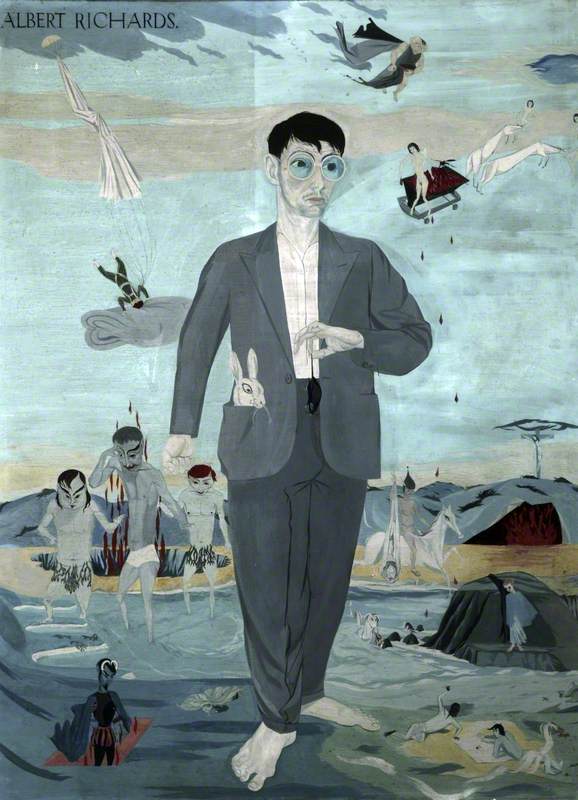This online collection showcases works of the Official War Artist Albert Richards. At the age of 25, Richards was the youngest British War Artist to be killed in action in World War II, his early death making him one of the great 'what-ifs' of twentieth-century British art. Featured in this curation is a selection of works from the Williamson Art Gallery and Museum's collection of over 200 pieces by the artist, highlighting his artistic journey, from early student works to distinctive pieces created during the war.
Most of these works, and others from the Albert Richards collection, can be viewed in an exhibition of Richards' work running at the Williamson throughout 2025.
Compiled by Sarah Halliday, Curatorial Assistant
Albert Richards was born on the 19th December 1919 in Liverpool, England. He grew up in the town of Wallasey with his parents George and Hannah Richards. With ambitions of becoming an artist, Richards attended Wallasey School of Art from 1935 to 1939. Here, he explored a variety of art mediums, his early works consisting of pencil drawings, watercolour paintings and prints on paper. His sketchbooks, that now form part of the Williamson’s collection, showcase a variety of work ranging from life drawings and anatomical studies to sketches of architecture and heraldic imagery - common subjects taught at art school during the 20th century.
Albert Richards (1919–1945)
Pencil & ink on paper
H 35.4 x W 22.8 cm
Williamson Art Gallery & Museum
During his time as a student, Albert Richards was keen on print design and created a number of lithograph and woodblock prints. Lithography is a printing technique that was widely used in the 1930s, commonly seen in film posters and book covers from this decade. This technique lent itself well to the graphic styles of Art Deco and surrealism that were popular during this period, the latter being a huge influence on Richards' artistic style.
Albert Richards (1919–1945)
Lithograph print
H 27.9 x W 17.1 cm
Williamson Art Gallery & Museum
A strong surrealist style can be seen in many of Richards' early paintings. This was likely influenced by the likes of Max Ernst and Salvador Dali, who Richards saw in an exhibition of surrealist art at the Walker Art Gallery in Liverpool. He also took inspiration from the pattern and rich colour of Indian minature paintings that he came across at the Victoria and Albert Museum in 1938.
Albert Richards (1919–1945)
Gouache on paper
H 24 x W 21.2 cm
Williamson Art Gallery & Museum
It was at Wallasey School of Art that Richards met fellow art student George Wallace Jardine. Jardine was recognised for his distinct surrealist style, creating paintings and collages that depicted mythical creatures in dream-like landscapes. Whilst Richards was enlisted in 1940, Jardine was rejected for health reasons. He would spend the rest of the War in the Lake District with the rest of the Royal College of Art and would go on to have a influential career as an artist and teacher in the Post-War Liverpool art scene.
George Wallace Jardine (1920–2002)
Oil on board
H 91.4 x W 60.9 cm
Williamson Art Gallery & Museum
In September 1939, World War II began. Albert Richards left Wallasey school of Art in December with a scholarship awarded by the Borough of Wallasey to study painting at the Royal College of Art. This painting, created during this time, shows the close relationship in surrealist style that Richards and Jardine shared. Like in the previous work, a composition of three columns is used on a vertical plain.
Albert Richards (1919–1945)
Oil on board
H 57.7 x W 36.6 cm
Williamson Art Gallery & Museum
Less than three months after joining the Wallasey School of Art, Richards was called up for National Service and joined the Royal Engineers as a sapper. He was first stationed at Fornham Hall, near Suffolk. This charcoal drawing is a self potrait of Richards, likely created during the early years of the War.
Albert Richards (1919–1945)
Charcoal on paper (?)
H 33 x W 24.5 cm
Williamson Art Gallery & Museum
During his time as a soldier, Albert Richards painted whenever he could. His works depicted people and landscapes he had encountered throughout the war, often highlighting the mundane, everyday aspects of life as a sapper. This work, painted with gouache, makes use of bold blocks of colour to perhaps give a greater degree of life and the surreal to an otherwise humdrum setting of a military encampment.
Albert Richards (1919–1945)
Gouache
H 12 x W 18 cm
Williamson Art Gallery & Museum
Richards used whatever painting materials he could obtain, working in difficult conditions in camps or barracks after his day's duties were complete. He sent a number of works to the War Artists' Advisory Committee with the hope of becoming recognised as an Official War Artist. In a letter to the committee in 1942, Richards wrote: "To be given a chance to create is one of the rewards for so much destruction".
Albert Richards (1919–1945)
Gouache & watercolour
H 28 x W 37 cm
Williamson Art Gallery & Museum
Many of Richards' paintings reflect his personal experiences during the war, such as 'The Ditched Truck'. As Richards recalled: "This incident happened to us on the recent manoeuvres held in this country. This night No.4 sub-section the cooks and compressor trucks were cut off from the rest of the company. In a mad effort to catch up with the company, No. 4 sub-section truck was ditched much to the disgust of its sleeping occupants. Fortunately, the compressor was able to get the sub-section out".
Albert Richards (1919–1945)
Watercolour
H 28 x W 37 cm
Williamson Art Gallery & Museum
In the spring of 1943, Albert Richards was transferred to 591 (Antrim) Parachute Squadron and started his training as a paratrooper at Ringway near Manchester. By this time he was developing his painting technique and producing more accomplished works, including 'A Searchlight Battery'. In this work, Richards depicts the grim reality of the home front, featuring a figure splayed on the floor, barbed wire, and barrage balloons in the distance stationed over Liverpool.
Albert Richards (1919–1945)
Oil on panel
H 50.8 x W 76.2 cm
Williamson Art Gallery & Museum
The War Artists' Advisory Committee appointed Albert Richards as an Official War Artist in 1944, with the rank of Captain. On D-Day, 6th June 1944, Richards parachuted into France with the 6th Airborne Division, participating in the attack on the Merville Battery and the capture of Le Plein village. The invasion brought with it huge numbers of troops and vehicles, so stone from local quarries was needed to build new roads. Richards captures this in his watercolour painting, using a muted colour palette to reflect the sombre, overcast atmosphere. The composition centres a large rock face in layered tones of beige, grey, and earthy browns, with subtle traces of military equipment camouflaged in the foreground of the work.
Albert Richards (1919–1945)
H 58.5 x W 74.2 cm
Williamson Art Gallery & Museum
In the following weeks, Richards created several paintings capturing the events of D-Day. 'France (Beach Head) The Orchard By Pass' depicts one of the newly built roads for army vehicles in Northern France following the invasion.
The year after, on the 5th March 1945, just months before the end of the war, Richards was killed in action after driving his jeep through a minefield en route to painting a night attack. It was a tragedy both artistic and personal. British art lost one of its brightest talents at the age of just 25, whilst Hannah and George Richards were left without their only child.
Albert Richards (1919–1945)
Watercolour on paper
H 53 x W 72.7 cm
Williamson Art Gallery & Museum
